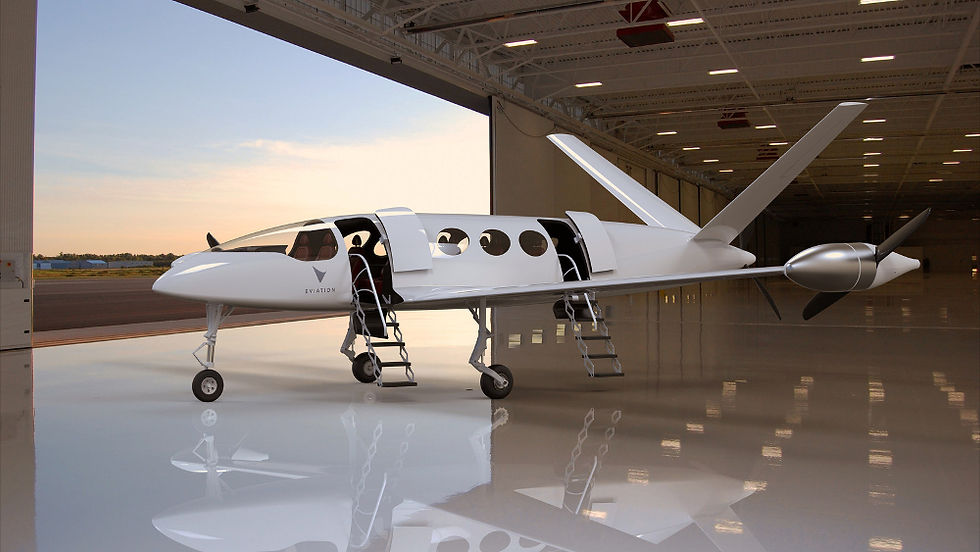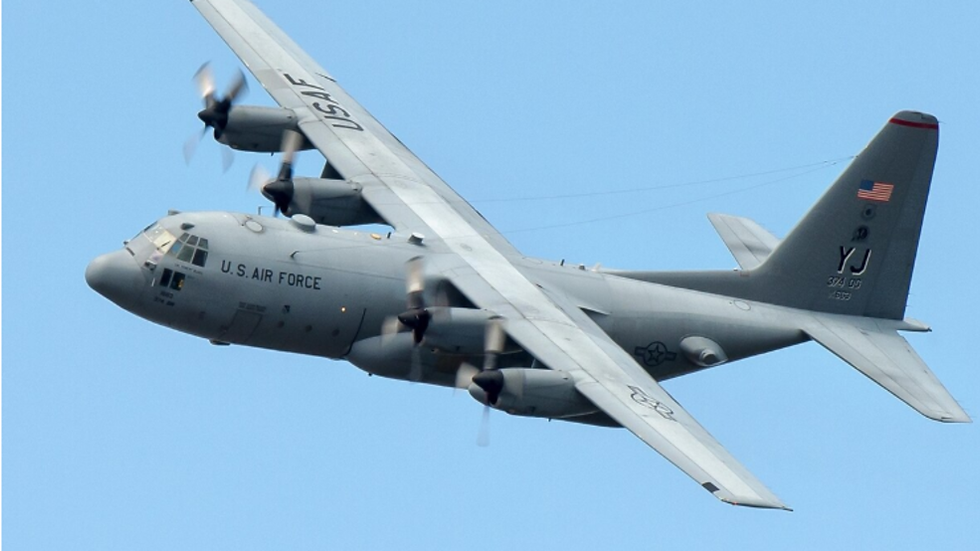News Letter 7 November 2019
- Garth Calitz
- Nov 7, 2019
- 8 min read
Good day all
Hope you all survived the Springbok Euphoria that has gripped the nation for the last week, winning the third Rugby World Cup was a great moment and we would like to congratulate the Mighty Boks on their super achievement.
This weekend is a big one for all EAA members with the annual migration to Brits Airfield for the Sun ‘n Fun weekend, the weather might cause a bit of a problem on Saturday afternoon and Sunday but hopefully it doesn’t cause to much disruption.
The FAI Sailplane Grand Prix is currently underway at Potchefstroom. The gliding club has a fully functional restaurant and will be serving breakfast and dinner each day. Evening events will be scheduled at the airfield. Depending on the weather and interest, day of afternoon trips to local game reserves can be organized.


Electric planes are here – but they won’t solve flying’s CO₂ problem

The UK government plans to ban the sale of new conventional petrol and diesel cars by 2040. Clearly the plan is for all citizens to be driving electric or hybrid-electric cars, or – better still – riding bicycles. But can electrification help cut emissions from that other carbon-intensive form of passenger transport, flying?
This is a complex question and one where size matters. It is possible for small aircraft to be powered by electricity. In fact, several companies are already developing small electric aircraft and they could come on the market within the next few years.
But for the large aircraft we all use more frequently it is unlikely to happen anytime soon. The problem isn’t the propulsion technology but the energy storage. Jet fuel contains around 30 times more energy per kilogram than the most advanced lithium-ion battery currently available.

The world’s largest passenger plane, the Airbus A380, can fly 600 passengers 15,000 kilometres in a single flight. But, according to my calculations, with batteries it could only fly a little over 1,000 kilometres. Even if all the passengers and cargo were replaced with batteries, the range would still be less then 2,000 kilometres. To keep its current range, the plane would need batteries weighing 30 times more than its current fuel intake, meaning it would never get off the ground.
This trade-off is particularly bad for long-haul flights because the fuel makes up half of the aircraft’s weight at take-off. What’s more, a conventional plane gets lighter as the fuel is consumed, but an electric aircraft would have to carry the same battery weight for the entire flight. As I said, size matters.
For a five- to ten-seat light aircraft, fuel is likely to make up 10% to 20% of the aircraft’s weight. Simply swapping the fuel for batteries might still reduce the distance the plane can fly by an impractical amount. But replacing two or three passengers with additional batteries would give a range of 500 kilometres to 750 kilometres, compared to a fuel-powered range of over 1,000km.
However, there could be another option. Israeli firm Eviation recently revealed a prototype version of what it claims will be the world’s first commercial all-electric passenger aircraft. The aircraft, named Alice, doesn’t just swap jet fuel for batteries but is a whole new design concept that improves the way the propulsion system is integrated into the airframe. Carrying nine passengers with a range of 1,000km, Alice is expected to enter service in 2022.


Alice may be a practical alternative for small, regional journeys but not for most scheduled passenger flights, even short-haul ones. So how can electrification help here? Improving battery technology is one option. A new technology known as lithium-air batteries can theoretically reach the same energy density as jet fuel. However, they are still at the laboratory stage. Given the extremely safety conscious nature of the aviation industry, it is unlikely to plan future aircraft on unproven technology.
What we are more likely to see for short-haul flights in the next 20 to 30 years is hybrid aircraft that combine current turbofan engines with new electric propulsor systems. This more flexible hybrid system could be optimised to provide the high thrust required for take-off and the energy density needed for a long cruise.
This is an area being actively pursued in the E-FanX project, which involves Airbus, Rolls-Royce and Siemens teaming up to develop a hybrid-electric propulsion flight demonstrator. Using a BAe 146 aircraft, which usually carries around 100 passengers, they plan to replace one of the aircraft’s four Honeywell turbofan engines with a propulsor fan driven by a two-megawatt electric motor.


In the project’s initial phases, the electricity will actually be supplied by a Rolls-Royce AE2100 gas turbine housed in the aircraft’s fuselage (main body). But the E-FanX will still be an important step in the evolution of hybrid electric technology. Airbus says it wants to make this technology available for 100-seat aircraft by the 2030s.
It’s also possible to equip a plane with multiple small electric propulsors in a so-called distributed propulsion system that is more efficient than traditional designs that use two large turbofans. This idea can be taken further by combining the separate fuselage and wings into a single “blended-wing-body”, more efficiently integrating the propulsors with the airframe in a more aerodynamic design. This could reduce the amount of energy the aircraft would need by 20%.

But neither of the world’s two main aircraft manufactures, Boeing and Airbus, are actively pursuing blended wing technology. Such a major design shift has too many technical challenges to make it commercially viable right now. For example, most airports wouldn’t be able to accommodate a blended-wing aircraft.
Unfortunately, for the type of flights most of us make there is currently no practical alternative to jet-fuelled turbofans. For this reason, the main aircraft engine manufacturers are investing heavily in improving their current engine technology. The International Air Transport Association estimates that each new generation of aircraft is on average 20% more fuel-efficient than the model it replaces, and that airlines will invest US$1.3 trillion in new planes over the next decade.

For example, Rolls-Royce’s most recent engine, the Trent XWB that powers the new Airbus A350, is marketed as “the world’s most efficient large aero-engine”. Airbus claims the engine will help the A350 to achieve “25% lower operating costs, fuel burn and CO₂ emissions when compared with previous-generation aircraft”.
The next generation of Rolls-Royce engine, the UltraFanTM, will offer a further 20% to 25% reduction in fuel consumption and CO₂ emissions and is due to enter into service in 2025.
But it’s worth remembering that aviation currently contributes only 2% to 3% of global CO₂ emissions. This compares to about 30% to 35% for the whole transport sector, and another 30% to 35% for electricity generation.
The number of air passengers is expected to double over the next two decades but so are total emissions so this is unlikely to make aviation a bigger part of the problem. Reducing aviation emissions by 20% per generation of aircraft probably might not a sustainable improvement. But if hybrid aircraft are made a reality then flying really could become even less of a contributor to total emissions than it is today.

Bend's Epic Aircraft wins FAA certification for new plane

Bend-based Epic Aircraft announced Wednesday the Federal Aviation Administration has granted Type Certification for its E1000 all-carbon fibre aircraft design, concluding what it called "a rigorous seven-year program that establishes a new industry standard for performance, price and ramp appeal in the personal aircraft marketplace."


"This is a remarkable accomplishment for our entire community," said Epic CEO Doug King in a news release. "I want to thank our employees, who have worked so diligently to deliver this exceptional design, as well as our partners, suppliers, and customers, who have faithfully supported us each step of the way. It has been a true team effort, along with the fantastic support of the FAA."
The Epic E1000, priced at $3.25 million fully equipped, is based on the company's experimental Epic LT model, which was introduced to the market in 2005 through an owner-assist build program based at Epic headquarters.
"Transitioning that design into a certified version was the chance to offer a truly compelling product to the industry, a ‘no comprises' aircraft that customers would really want. And they do," added King.

Epic said it has over 80 confirmed E1000 reservations from around the US, as well as Canada, Mexico, Central/South America, Europe, Russia, South Africa and Australia.
"We had some opportunities to speed things up along the way, to get certification earlier," said King. "But that would have required some tradeoffs that we weren't willing to make. We consider performance to be our brand, so we decided to make it perform. And we did!"
The first seven E1000 customer aircraft are in various stages of fabrication, bonding and assembly, with initial deliveries slated to begin this year. All Epic manufacturing, engineering and administration operations are based in the U.S., the company said.
Epic has doubled its composite fabrication capacity, invested heavily in tooling, equipment, curing ovens, and refined workflows to accelerate E1000 production ramp. The company is currently running two production shifts, with plans to further expand operations. Production Certification is targeted for the first quarter of 2020.
"The FAA has a difficult job, overseeing a very challenging process, ultimately aimed at keeping us all safe," commented King. "They have been a great partner, collaborating with us throughout the program, and certainly contributing to the structural integrity and safety of the E1000. We are very excited to begin this new chapter in the Epic Aircraft story."

Air Force airman falls out of C-130 over Gulf of Mexico

A search is underway for a U.S. Air Force airman who went missing on Tuesday after falling out of a transport plane during a training jump from Hurlburt Field, Fla.
The airman fell roughly 1,500 feet out of a C-130 and into the Gulf of Mexico and was able to deploy his parachute before hitting the water. Flight crew members initially saw the airman treading water but lost sight of him when the plane attempted to circle back around.


The missing airman was part of the Air Force 24th Special Operations Wing (24th SOW). The airman’s name and description has not been revealed, and he has only been identified as a staff sergeant.
Coast Guard Petty Officer Kamil Zdankowski reportedly confirmed U.S. Coast Guard personnel have joined the Air Force Search for the missing airman. The Florida Fish and Wildlife Commission has also reportedly joined the search.
According to an Air Force unit factsheet, the 24th SOW is based out of Hurlburt Field, and is one of three active duty special operations wings that answer to the Air Force Special Operations Command. The Air Force unit is trained to conduct airfield reconnaissance, assessment, and control; personnel recovery; joint terminal attack control and environmental reconnaissance.

The special operations airmen often embed with Navy SEALs, Army Green Berets and Rangers and typically supplement those units with combat air support, medical aid and personnel recovery skill sets.
The 24th SOW is the Air Force’s most decorated unit and since Sept. 11, 2001, Special Tactics Airmen have received six Air Force Crosses, 32 Silver Stars, 105 Purple Hearts, and nearly a thousand Bronze Stars for service, of which hundreds are for valour.
The 24th SOW also includes the 24th Special Tactics Squadron (STS). Air Force Tech. Sgt. John A. Chapman, a member of the 24th STS, was posthumously awarded the Medal of Honor for his actions while fighting alongside Navy SEALs during the Battle of Takur Ghar during the early months of the war in Afghanistan.



























Comments